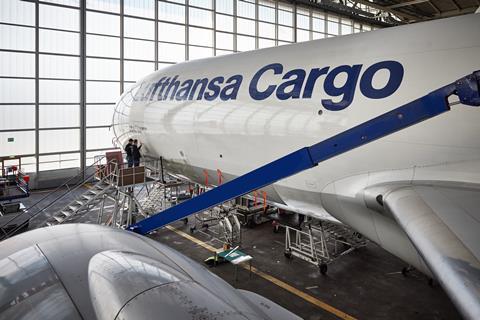With demands intensifying for aviation to cut its emissions, airlines increasingly are turning to “one percenters”, the quick fixes which deliver immediate results. They are also turning to interim technologies while they wait for bigger breakthroughs.
Headline emission reductions will come from sustainable aviation fuels, new propulsion and airframe designs, streamlined airspace management, and carbon removal technologies. But their availability at effective scale remains years away.

So airlines are pursuing incremental but immediate improvements through changes to daily procedures, upgrading with already-available products, or investing in medium-term technologies.
They are also harvesting fresh insights from the mountains of data collected by aircraft, but historically never explored, or through greater use of real-time information.
Realistically, these step changes will deliver limited benefits – by some estimates, around 2% of aviation’s decarbonisation efforts.
But they remain important because their benefits are deliverable now.
Operational initiatives include single-engine taxying by aircraft or towing by electric or hybrid tugs, and the use of airport electricity instead of aircraft-generated energy to power parked planes.
Where possible, optimised air routes and initiatives such as continuous descents are being used to shorten flights and cut emissions, while engine core cleaning and modified deployment of wing flaps and engine thrust reversers can also quickly but marginally cut fuel burn and emissions.
There’s greater use of lightweight seats, catering trolleys and galley equipment, removal of duty-free stock from aircraft, and in-flight connectivity for passengers’ smart devices, removing the need for weighty entertainment systems on some planes.
There’s also growing use of lightweight containers and nets for cargo, and even recyclable cardboard pallets which reduce the weight of freight, but not the payload.
And there’s a growing switch to lighter components, from aircraft tyres to wing and fuselage panels, and efficiency enhancements from thinner paint to aerodynamic treatments.
Lufthansa Cargo and Swiss International Air Lines are applying the newly EASA-approved ‘Aeroshark’ external coating to 23 Boeing 777s - 11 freighters and 12 passenger jets - replicating shark skin to help reduce aerodynamic drag. Swiss operated the first passenger flight using this technology, which is collectively expected to cut almost 24,000 tons of CO2 emissions annually, in October, while Lufthansa Cargo’s first modified freighter entered service today.
With Canada’s WestJet, US-based Aero Design Labs has progressed tests of lightweight wing and fuselage components which, when retrofitted to 737 aircraft can also streamline aerodynamics, cutting fuel burn and emissions by around 1.5%. Delta Air Lines plans to retrofit over 200 737s once the kit receives FAA approval.
Technical intelligence is also key, with growing access to data collected by aircraft and use of real-time satellite communications both driving decisions which can quickly cut fuel burn and emissions.
Aircraft data has produced insights into inefficiencies such as uplift of excess taxi fuel and potable water, both of which add significant weight, increasing emissions. By leveraging the data, airlines can use past performance to plan more efficient future flights.
Real-time data collated by aircraft in flight, or obtained through ever-improving satellite communication systems, also enables pilots to immediately optimise flights and cut emissions.
“In the long term, obviously the impact from green aircraft and sustainable fuel on reduced CO2 emissions is big. But today this is not available,” says Sylvie Sureda-Perez, director of Datalink Solutions for the aviation connectivity provider Inmarsat, in its recent report ‘Plotting the Route to a Greener Future.’
“If you want to start addressing the problem,” she says, “you have to start with the available solution.”
Sometimes that’s a one percenter.





















